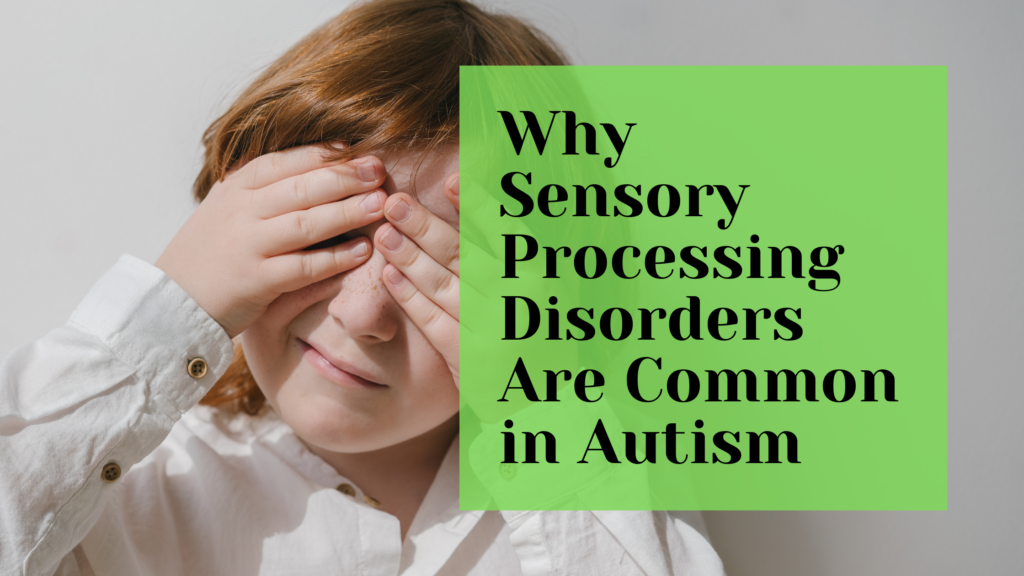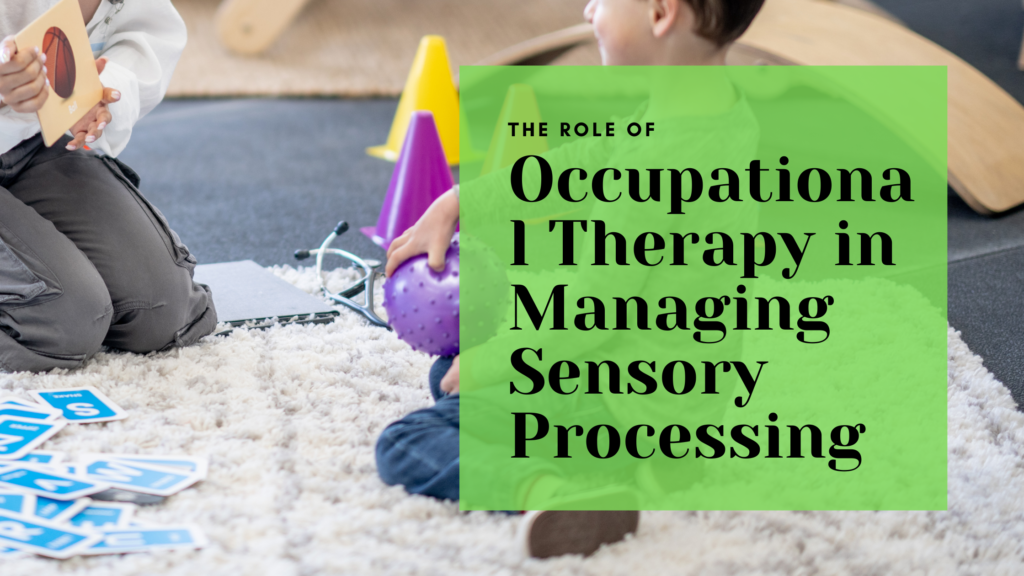I. Introduction
Understanding Sensory Sensitivities in Autism
Sensory sensitivities are common among individuals with Autism Spectrum Disorder (ASD). These sensitivities occur when the brain has difficulty processing and responding to sensory stimuli, such as sounds, lights, textures, or smells. For autistic individuals, sensory sensitivities can lead to either hypersensitivity, where stimuli are overwhelming, or hyposensitivity, where more intense stimuli are required to elicit a response. These sensory processing challenges can significantly impact daily life, making it crucial to address them effectively.
Importance of Addressing Sensory Sensitivities
Addressing sensory sensitivities is essential because they can affect nearly every aspect of an autistic individual’s life, including learning, social interactions, and overall well-being. Sensory sensitivities can lead to anxiety, frustration, and meltdowns, which can interfere with a child’s ability to participate in everyday activities and hinder their development. By managing these sensitivities, parents and caregivers can help their children navigate their environments more comfortably and reduce stress.
Purpose of the Article
This article will provide practical tips and strategies for managing sensory sensitivities in autistic children. It will cover ways to create sensory-friendly environments, use sensory tools, establish routines, teach self-regulation techniques, and collaborate with professionals. The goal is to equip parents and caregivers with actionable advice to help their children thrive despite sensory challenges.
II. What Are Sensory Sensitivities?
Definition and Overview
Sensory sensitivities refer to atypical responses to sensory stimuli, where the brain either overreacts (hypersensitivity) or underreacts (hyposensitivity) to sensory input. Unlike typical sensory processing, where the brain filters and responds appropriately to stimuli, sensory sensitivities can cause distress or a need for intense sensory input, leading to challenges in daily functioning.
Types of Sensory Sensitivities
- Hypersensitivity: This is an over-responsiveness to sensory stimuli, where sounds, lights, textures, or smells can be overwhelming. For example, a child may cover their ears at loud noises or avoid certain fabrics due to discomfort.
- Hyposensitivity: This is an under-responsiveness to sensory stimuli, where individuals may seek out more intense sensory input. Children with hyposensitivity might crave movement, touch, or sound and may engage in behaviors like spinning or making loud noises to fulfill their sensory needs.
Common Triggers of Sensory Sensitivities
Common triggers for sensory sensitivities include:
- Loud noises: Sudden or constant loud sounds, such as sirens or crowded places, can be distressing.
- Bright lights: Harsh or flickering lights can be overwhelming, especially in environments with fluorescent lighting.
- Strong smells: Certain scents, like perfumes or cleaning products, can be overpowering and cause discomfort.
- Textures: Some children may be sensitive to the feel of certain fabrics or foods, leading to avoidance behaviors.
III. Recognizing Sensory Sensitivities in Your Child
Behavioral Signs
Recognizing the signs of sensory sensitivities is the first step in managing them. Common behavioral signs include:
- Covering ears: A common reaction to overwhelming sounds.
- Avoiding certain textures: Refusal to wear specific clothing or eat certain foods due to their feel.
- Seeking sensory input: Engaging in repetitive behaviors like spinning, jumping, or touching objects to satisfy sensory needs.
Physical Reactions
Sensory sensitivities can also manifest in physical symptoms, such as:
- Increased heart rate: A sign of anxiety or discomfort in response to sensory stimuli.
- Sweating: A physical reaction to sensory overload.
- Changes in breathing: Rapid or shallow breathing may occur when a child is overwhelmed by sensory input.
Emotional Responses
Emotional responses to sensory sensitivities can include:
- Anxiety: Increased anxiety in situations where sensory overload is likely.
- Frustration: Difficulty coping with sensory input can lead to frustration and irritability.
- Meltdowns: Overwhelming sensory experiences can result in emotional outbursts or meltdowns, where the child struggles to regain control.
IV. Practical Tips for Managing Sensory Sensitivities
1. Creating a Sensory-Friendly Environment
Home Environment
Creating a sensory-friendly home environment is crucial for helping your child feel comfortable and secure. Here are some tips:
- Use soft lighting: Replace harsh, fluorescent lights with softer, dimmable lighting to reduce visual overstimulation.
- Soundproofing: Consider adding rugs, curtains, or soundproofing panels to minimize noise levels.
- Clutter-free spaces: Keep areas organized and free from clutter to create a calming environment that is less visually overwhelming.
School Environment
Working with teachers to create a sensory-friendly classroom can help your child succeed in school:
- Quiet zones: Designate areas in the classroom where your child can go if they need a break from sensory input.
- Flexible seating: Allow your child to choose seating options that suit their sensory needs, such as sitting on a cushion or using a fidget tool.
- Sensory breaks: Encourage the incorporation of regular sensory breaks throughout the day to help your child manage their sensory input.
Public and Social Environments
Preparing for outings and social events can help minimize sensory overload:
- Plan quiet times: Choose times to visit public places when they are less crowded and quieter.
- Use sensory tools: Bring along sensory tools like noise-cancelling headphones or fidget toys to help your child stay calm.
- Prepare for transitions: Explain what to expect before arriving at new places to help your child anticipate and prepare for the sensory environment.
2. Using Sensory Tools and Aids
Noise-Cancelling Headphones
Noise-cancelling headphones can be incredibly effective in reducing auditory overload, especially in noisy environments like shopping malls or busy classrooms. These headphones block out background noise, allowing your child to focus and feel more comfortable.
Weighted Blankets and Vests
Weighted blankets and vests provide deep pressure therapy, which can be calming and help reduce anxiety. The gentle pressure from these items mimics the feeling of a hug, promoting relaxation and helping your child manage their sensory sensitivities.
Fidget Toys and Chewables
Fidget toys and chewables offer tactile stimulation that can help your child focus and self-regulate. These tools are particularly useful for children who seek sensory input through touch or oral activities. Popular options include stress balls, fidget spinners, and chewable necklaces.
3. Establishing Routines and Predictability
Importance of Routine
Establishing a consistent daily routine can significantly reduce anxiety and prevent sensory overload. Predictability helps children know what to expect, which can make transitions between activities smoother and less stressful.
Using Visual Schedules
Visual schedules are an effective tool for helping your child anticipate changes in their routine. These schedules use pictures or symbols to represent different activities, making it easier for your child to understand and follow the day’s events.
4. Teaching Self-Regulation Techniques
Breathing Exercises
Simple breathing exercises can be a powerful tool for helping your child calm down during sensory overload. Teach your child to take slow, deep breaths, inhaling through the nose and exhaling through the mouth, to help regulate their emotions.
Mindfulness and Relaxation Techniques
Mindfulness practices, such as guided meditation or progressive muscle relaxation, can help your child manage their sensory sensitivities. These techniques encourage focus on the present moment and can reduce stress and anxiety.
Identifying and Communicating Triggers
Encourage your child to recognize and communicate their sensory triggers. By understanding what causes discomfort, they can learn to anticipate and manage sensory challenges more effectively.
5. Tailoring Activities to Sensory Needs
Sensory-Friendly Hobbies
Engage your child in activities that cater to their sensory preferences. Sensory-friendly hobbies might include swimming, which provides deep pressure input; arts and crafts, which offer tactile stimulation; or nature walks, which can be calming and grounding.
Adapting Playtime
Adapt play activities to avoid overwhelming sensory input while still making them engaging and enjoyable. For example, if your child is sensitive to noise, choose quieter toys or activities, or if they seek movement, incorporate swings or balance activities into playtime.
V. Working with Professionals
1. Occupational Therapy
Role of Occupational Therapists
Occupational therapists are essential in developing personalized strategies for managing sensory sensitivities. They assess your child’s specific needs and design interventions that help improve sensory processing and daily functioning.
Sensory Integration Therapy
Sensory Integration Therapy (SIT) is a type of occupational therapy that focuses on helping children with sensory processing issues. SIT involves engaging the child in activities that challenge their sensory systems in a structured way, promoting better sensory integration and reducing sensitivity.
2. Collaborating with Educators
Communicating Sensory Needs to Teachers
Effective communication with your child’s teachers is crucial for ensuring their sensory needs are met in the classroom. Provide clear information about your child’s sensitivities and suggest strategies that have worked at home.
IEPs and 504 Plans
Incorporate sensory accommodations into your child’s Individualized Education Program (IEP) or 504 Plan. These accommodations might include sensory breaks, the use of sensory tools, or adjustments to the classroom environment.
3. Parental Support and Resources
Support Groups and Communities
Connecting with other parents and professionals through support groups can provide valuable advice and emotional support. Sharing experiences with others facing similar challenges can help you feel less isolated and more empowered to manage your child’s needs.
Educational Resources
There are numerous books, websites, and courses available that offer guidance on managing sensory sensitivities. These resources can provide you with new strategies and a deeper understanding of sensory processing issues.
VI. Challenges in Managing Sensory Sensitivities
1. Variability of Sensory Sensitivities
Sensory sensitivities can vary widely from one child to another, making it essential to personalize approaches. What works for one child may not work for another, so it’s important to be flexible and open to trying different strategies.
2. Consistency Across Environments
Maintaining consistency in sensory strategies across different settings (home, school, public) can be challenging. Consistent routines and communication with all caregivers and educators involved are key to ensuring that sensory strategies are effectively implemented.
3. Overcoming Resistance to Change
Introducing new strategies and tools can be met with resistance, especially if your child is accustomed to certain routines. Gradually introduce changes and be patient, allowing your child time to adjust.
VII. Conclusion
Recap of Practical Tips
Managing sensory sensitivities in autistic children requires a multifaceted approach that includes creating sensory-friendly environments, using sensory tools, establishing routines, teaching self-regulation techniques, and collaborating with professionals. These strategies can help your child navigate their sensory world more comfortably and confidently.
Encouragement for Ongoing Support
As your child’s needs evolve, it’s important to continue adapting and refining strategies. Ongoing support, education, and communication with professionals and other parents will help you stay informed and effective in managing sensory sensitivities.
Further Resources
For additional information, consider exploring resources from organizations like the American Occupational Therapy Association (AOTA), Autism Speaks, and local autism support groups. These resources offer valuable tools, support, and information to help you and your child succeed.
We invite you to share your experiences or tips for managing sensory sensitivities. Your insights can help others who are navigating similar challenges.
Subscribe for More
Subscribe to our newsletter or follow us for more articles on autism and sensory processing. Together, we can build a supportive community dedicated to improving the lives of individuals with sensory sensitivities.
References:
- Schaaf, R. C., & Miller, L. J. (2005). Occupational therapy using a sensory integrative approach for children with developmental disabilities. Mental Retardation and Developmental Disabilities Research Reviews, 11(2), 143-148.
- Baranek, G. T. (2002). Efficacy of sensory and motor interventions for children with autism. Journal of Autism and Developmental Disorders, 32(5), 397-422.
- American Occupational Therapy Association (AOTA). (2020). The role of occupational therapy in addressing sensory processing issues. AOTA Fact Sheet.


